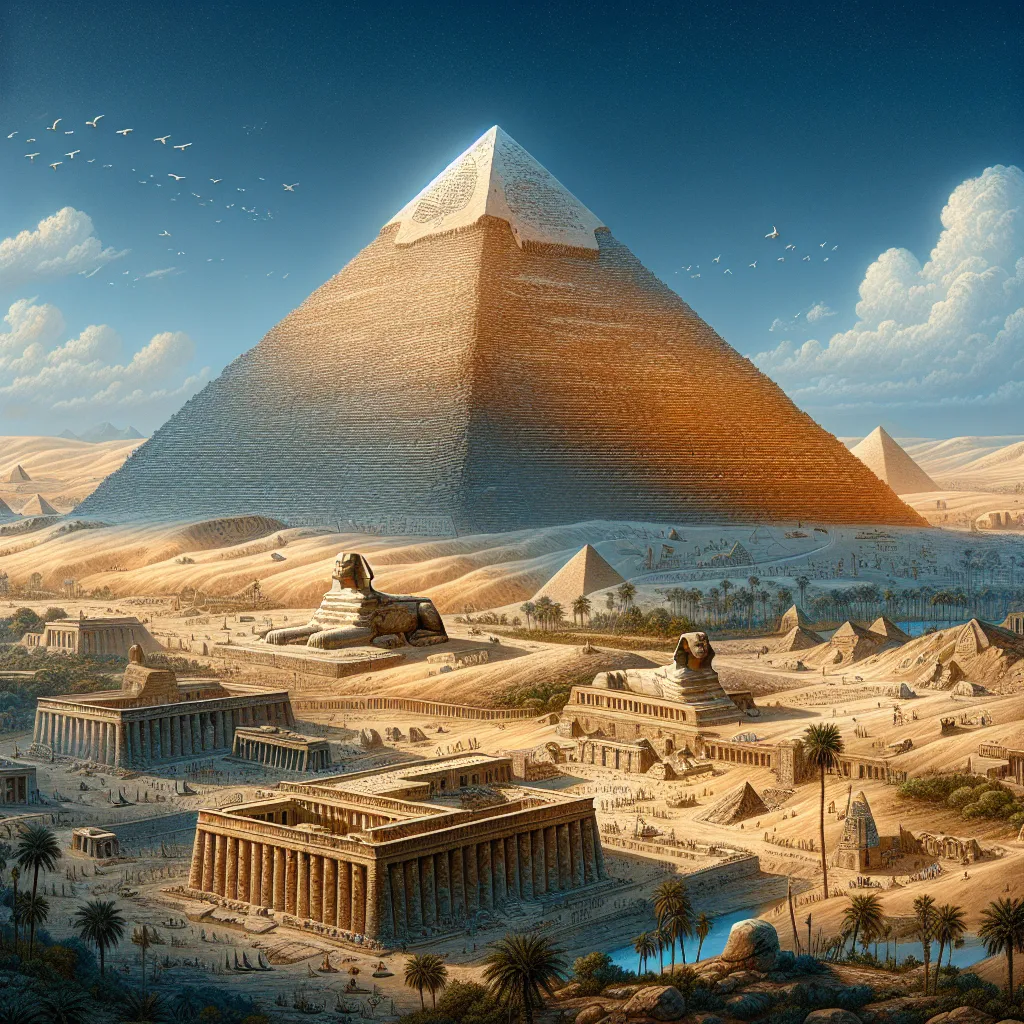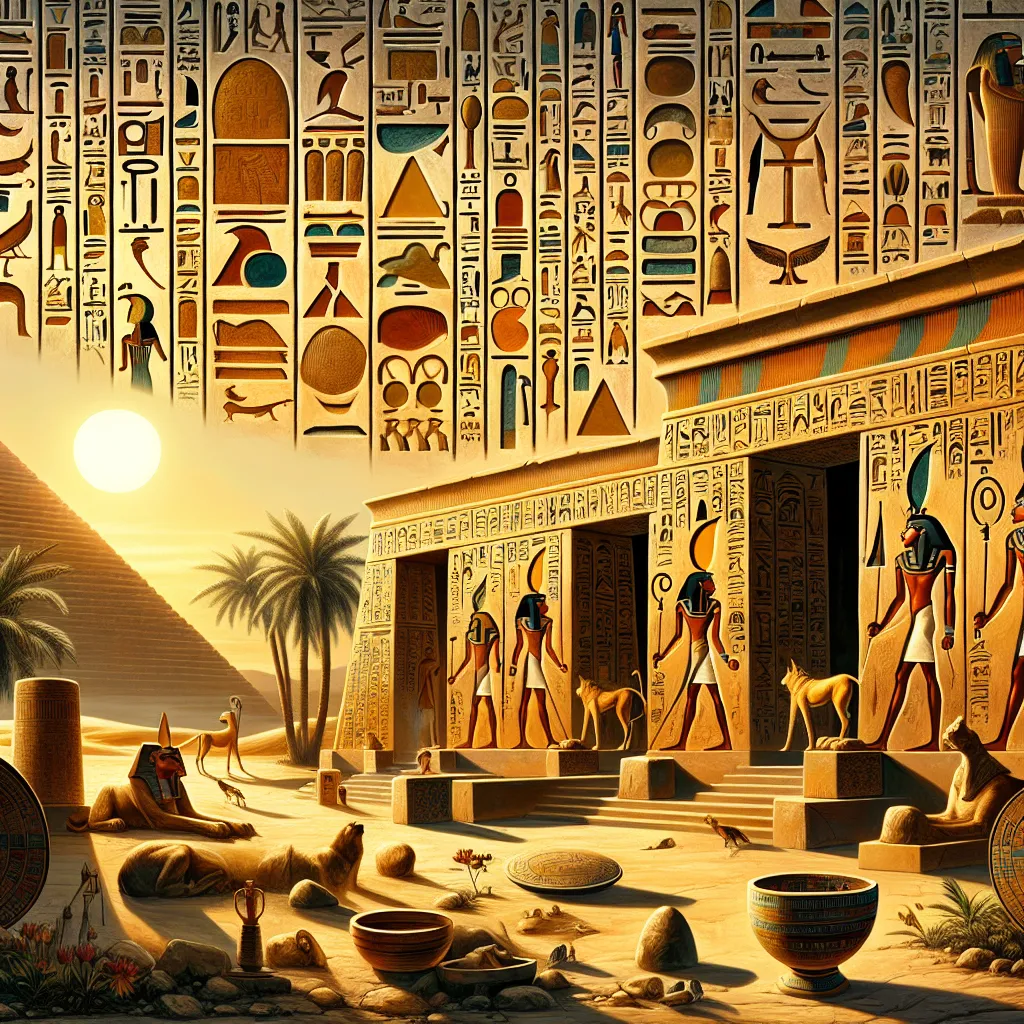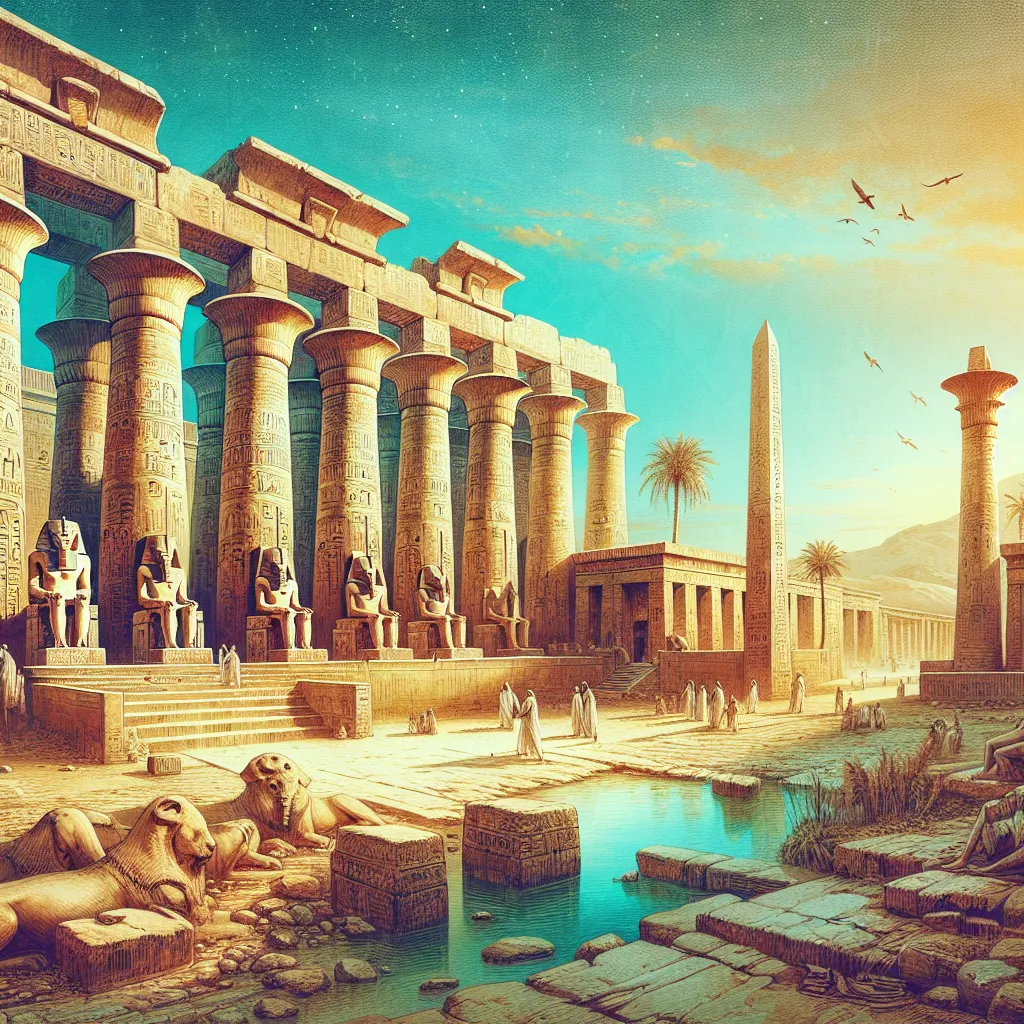Exploring Ancient Egyptian Civilization
Ancient Egyptian Civilization
Introduction
Ancient Egypt is one of the most fascinating and influential civilizations in human history. Spanning over 3,000 years, from approximately 3100 BCE to 30 BCE, Egypt’s history is marked by remarkable achievements in architecture, art, science, and governance. The civilization flourished along the Nile River, which provided fertile land and resources necessary for sustaining a complex society.
Geography and the Nile
The Nile River was the lifeblood of ancient Egypt. It flowed northward through the arid desert, creating a narrow strip of fertile land. The annual flooding of the Nile deposited nutrient-rich silt on the surrounding land, allowing agriculture to thrive. This agricultural abundance enabled the growth of a centralized state and supported a large population.
Pharaohs and Dynasties
Ancient Egypt was ruled by a series of dynasties, each led by a pharaoh who was considered both a king and a god. Some of the most famous pharaohs include:
- Narmer: Often credited with unifying Upper and Lower Egypt around 3100 BCE, becoming the first pharaoh of a united Egypt.
- Khufu (Cheops): The pharaoh responsible for commissioning the Great Pyramid of Giza, one of the Seven Wonders of the Ancient World.
- Hatshepsut: One of the few female pharaohs, known for her prosperous reign and monumental building projects.
- Akhenaten: Introduced a monotheistic worship of the sun god Aten, radically changing Egyptian religion and art.
- Tutankhamun: The “boy king” whose tomb, discovered in 1922, provided invaluable insights into ancient Egyptian burial practices.
- Ramses II (Ramses the Great): Known for his military exploits, extensive building projects, and long reign of 66 years.
Religion and Mythology
Religion played a central role in ancient Egyptian life. The Egyptians practiced polytheism, worshipping a vast pantheon of gods and goddesses. Major deities included:
- Ra: The sun god and creator, often depicted with a falcon head and sun disk.
- Osiris: The god of the afterlife, death, and resurrection, associated with the cycle of the Nile.
- Isis: The goddess of magic and motherhood, wife of Osiris and mother of Horus.
- Horus: The sky god, often depicted as a falcon or a man with a falcon’s head, associated with the pharaohs.
- Anubis: The god of mummification and the afterlife, depicted with a jackal head.
Art and Architecture
Ancient Egyptian art and architecture are renowned for their grandeur and precision. Key architectural achievements include:
- Pyramids: Monumental tombs for pharaohs, the most famous being the Pyramids of Giza.
- Temples: Religious structures dedicated to various gods, such as the temples of Karnak and Luxor.
- Obelisks: Tall, four-sided, narrow tapering monuments ending in a pyramidion, often inscribed with hieroglyphs.
Egyptian art was highly symbolic and adhered to strict conventions. It was used to decorate tombs, temples, and monuments, often depicting gods, pharaohs, and daily life.
Writing and Literature
The ancient Egyptians developed one of the earliest writing systems, known as hieroglyphics. This system combined logographic and alphabetic elements and was used for religious texts, official inscriptions, and monumental art. The Rosetta Stone, discovered in 1799, was crucial in deciphering hieroglyphics.
Significant literary works include:
- The Pyramid Texts: The oldest religious texts in the world, inscribed on the walls of pyramids.
- The Book of the Dead: A collection of funerary texts and spells intended to guide the deceased through the afterlife.
- The Story of Sinuhe: A narrative about a court official who flees Egypt and later returns, reflecting themes of loyalty and fate.
Scientific Achievements
The ancient Egyptians made significant contributions to various fields of science and technology:
- Medicine: They practiced advanced medicine, including surgery, dentistry, and the use of medicinal plants. The Ebers Papyrus is one of the oldest medical texts.
- Mathematics: Egyptian mathematics included geometry for land surveying and construction, as well as a calendar system based on the lunar and solar cycles.
- Astronomy: They studied the stars and developed a 365-day calendar, aligning it with the annual flooding of the Nile.
Legacy
The legacy of ancient Egypt is vast and enduring. Its monumental architecture, religious beliefs, and contributions to art, science, and governance have profoundly influenced subsequent cultures and civilizations. The fascination with ancient Egypt continues to this day, inspiring countless studies, documentaries, and works of art.
Further Reading
For those interested in delving deeper into the history and culture of ancient Egypt, consider the following resources:
- Books:
- “The Oxford History of Ancient Egypt” by Ian Shaw
- “The Complete Gods and Goddesses of Ancient Egypt” by Richard H. Wilkinson
- “Temples, Tombs, and Hieroglyphs: A Popular History of Ancient Egypt” by Barbara Mertz
- Websites:
- Documentaries:
- “Planet Egypt” (History Channel)
- “Secrets of the Pharaohs” (PBS)
Images
 Description: The Great Pyramid of Giza, one of the Seven Wonders of the Ancient World, built for Pharaoh Khufu.
Description: The Great Pyramid of Giza, one of the Seven Wonders of the Ancient World, built for Pharaoh Khufu.
 Description: Ancient Egyptian hieroglyphs, a writing system that combines logographic and alphabetic elements.
Description: Ancient Egyptian hieroglyphs, a writing system that combines logographic and alphabetic elements.
 Description: The Temple of Karnak, one of the largest religious buildings ever constructed, dedicated to the god Amun.
Description: The Temple of Karnak, one of the largest religious buildings ever constructed, dedicated to the god Amun.
Conclusion
Ancient Egyptian civilization offers a window into the ingenuity and creativity of one of history’s most influential cultures. By exploring their achievements and understanding their way of life, we gain valuable insights into human history and the timeless quest for knowledge and meaning.